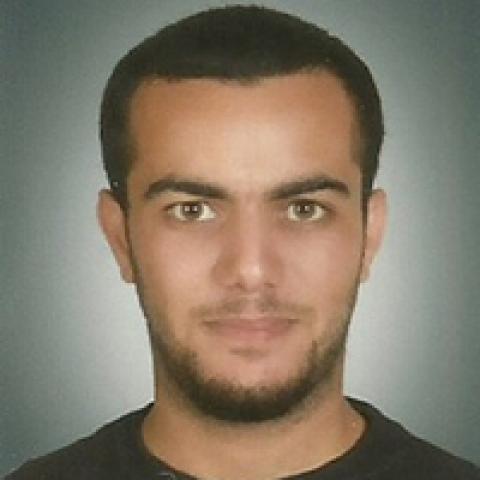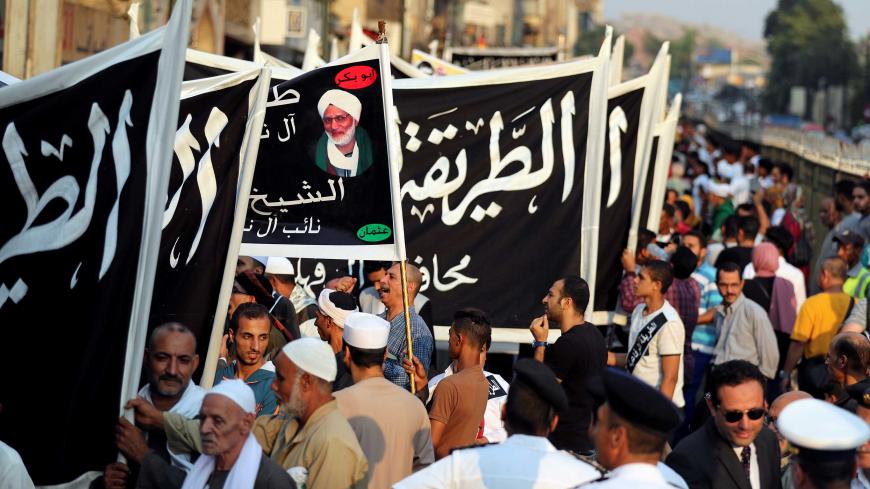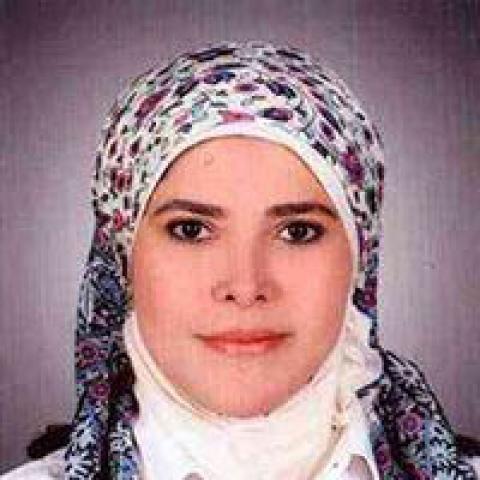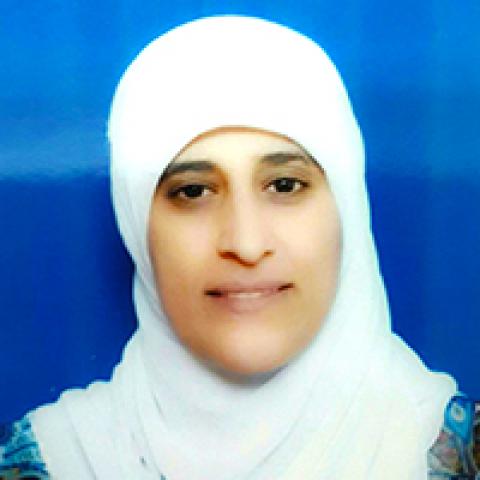Gazans explore Sufism
Sufism is found in several Gaza cities, but some claim the sect is not Muslim.

GAZA CITY, Gaza Strip — Every Friday afternoon people flock to a small mosque in one of the alleys in the Sheikh Radwan neighborhood in Gaza City. They are there not only to perform the five daily prayers, but to chant hymns in what is known as al-Hadrat among Sufis. This is what sets this mosque apart from the rest of the mosques in the Gaza Strip, not to mention the sign hung on its mihrab (prayer niche) indicating that it is affiliated with the Shadhiliyya Alawiyya order of Sufism.
The majority of the mosques in Gaza are subject to the division between the different political Islamic factions, which use mosques as a means to communicate with their public. For its part, the Hamas movement invests in the political rhetoric to further instill its authority through political speeches delivered in mosques across Gaza. Meanwhile, Sufis sit serenely, meditating spiritually away from mundane matters.
Sufism is a Muslim school of thought that spread in the Muslim world in the third century Hijri (Islamic calendar) as an individual call for asceticism. Those movements evolved into distinctive and well-known practices, which some consider mere delusions and superstitions.
The Sufi movement in Palestine has been active as part of popular religiosity. Notable Sufi Palestinian families include the al-Jabari family of Hebron, al-Saafin and al-Khalidi families in the Gaza Strip, and al-Makdisi family in Jerusalem. The Sufi movement maintained its character as an educational movement that calls for self-improvement and shunning worldly matters, including politics.
The Shadhiliyya Alawiyya order can be traced back to Sheikh Ahmad bin Alawi, known as Alawi. He was born in Mostaganem, Algeria, in 1869. He toured the globe proselytizing about Sufism, especially in the Maghreb, the Levant and Palestine. Everywhere he went, he gave permission and bayaa (allegiance) to the man he deemed qualified to establish a Sufi zawiya (Islamic religious school) in his own way.
Regarding the emergence of the zawiya, Sheikh Samir al-Khalidi told Al-Monitor that his grandfather, Sheikh Ibrahim al-Khalidi, founded a Sufi zawiya in 1942 that is affiliated with the Shadhiliyya Alawiyya order in Karatiyya village, 29 kilometers (18 miles) northeast from the center of Gaza City.
“On July 18, 1948, Karatiyya village was destroyed and its people displaced by a Zionist military force. As a result, our family moved to the Shati refugee camp, west of Gaza City, to re-establish the zawiya in the camp, which was known as the ‘sea zawiya.’ After my grandfather died, the zawiya’s leadership passed to my father, Sheikh Musa, who moved to Sheikh Radwan neighborhood in Gaza City and dedicated a part of his house to build a zawiya in 1988, which became part of the family heritage,” Khalidi added.
When his father died in 2010, Khalidi, 60, started serving the zawiya and still does so to this day.
On Friday Nov. 13, Al-Monitor visited the zawiya where the murids (the visitors of zawiyas according to Sufism) assembled after the afternoon prayer. They sat in a circle headed by Sheikh Khalidi, who sat in the zawiya’s sanctuary. One of the murids started the meeting by chanting the prophetic praises from an old book whose texts, Sheikh Khalidi told Al-Monitor, are attributed to Sheikh Alawi, the founder of the Shadhiliyya Alawiyya order.
At the end of the ritual, Sheikh Khalidi spoke to Al-Monitor about the Sufi message, saying that Sufism is a religious group that rejects violence, shuns politics and has a message of “educating the spirit and the soul.” He said that the hymns and body rituals are their way to tune the soul and evoke a state of “divine love.”
Khalidi believes that “the Sufi groups in the Gaza Strip are not being harassed by security apparatuses as they do not seek power and, therefore, they are not seen as opponents and do not pose a threat to other political Islam groups.”
In the same zawiya, Al-Monitor met with Mahmoud Bashir who frequents the zawiya to take part in the rituals, which he considers a kind of psychological release and training of the self. He prefers the zawiya, where hymns and music are acceptable. “The zawiya is dedicated to prayers only, without any interference in political rhetoric,” he said.
Although Sufi murids and followers are spread throughout the Gaza Strip, Ahed Nazmi told Al-Monitor, “The Sufis in the Gaza Strip are merely a group who believe in superstitions and delusions that are contrary to Islam.” Nazmi lives near a Sufi zawiya located in the Qarara area in the city of Khan Yunis in the southern Gaza Strip. He studies at Al-Azhar University in Gaza in the faculty of arts, history department.
The mufti of the Gaza governorate, Sheikh Hassan Laham, told Al-Monitor that he has no complete knowledge on the activities of Sufi groups in the Gaza Strip but that the standard for any Muslim group is to approve of the teachings of the Quran and the Sunnah. He did not give further details.
As opinions vary about Sufism in the Gaza Strip, it remains part of society, with zawiyas in most Palestinian cities. The zawiyas have followers and murids who find refuge in them and turn to prayers to escape from politics that weigh heavily on them.








